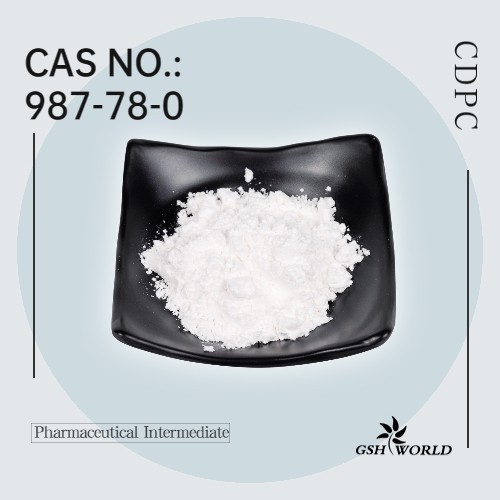Research introduction
The purpose of this paper is to analyze the mechanism of neuroprotection and neurorepair of citicoline in ischemic stroke and its application prospect in clinical practice.
With advances in acute stroke treatment such as thrombolytic therapy, endovascular therapy and stroke units, the survival and prognosis of stroke patients have been significantly improved.
For most patients without access to advanced treatments, stroke mortality and residual disability remain high, and many patients lose their independence of daily living due to motor and cognitive deficits.
Research in recent years has focused on limiting brain damage caused by acute ischemia (neuroprotection) and promoting recovery, plasticity, and nerve regeneration processes (neurorepair) to aid rehabilitation and improve the likelihood of returning to normal function.
Citicoline has therapeutic effects in multiple ischemic cascade stages of acute ischemic stroke and has shown efficacy in a variety of acute stroke animal models.
Part 1 Research background
Approximately 22 million people worldwide suffer from stroke each year, which is a global medical problem and one of the most devastating public health problems, often resulting in death or serious physical injury and disability.
Despite advances in modern medical technology, many patients still face long-term dysfunction and reduced quality of life.
Safe and effective neuroprotective drugs available in resource-limited healthcare services will improve outcomes for millions of acute stroke patients, and finding effective neuroprotective and neurorepair strategies is critical to improving outcomes for stroke patients.
However, due to the complex pathogenesis of ischemic stroke, which involves excitotoxic mechanisms, oxidative stress damage, inflammatory pathways, ion imbalances, apoptosis, and angiogenesis, these are all potential targets being evaluated in clinical trials.
Citicoline, as a neuroprotective agent, has therapeutic effects in multiple stages of the ischemic cascade of acute ischemic stroke.
It stabilizes cell membranes by increasing the synthesis of phosphatidylcholine and sphingomyelin and inhibiting the release of free fatty acids.
By protecting cell membranes, citicoline inhibits glutamate release during ischemia.
Citicoline facilitates the synthesis of nucleic acids, proteins, acetylcholine and other neurotransmitters, and reduces the formation of free radicals.
Citicoline simultaneously inhibits different steps of the ischemic cascade, protecting damaged tissue from early and delayed ischemic brain injury mechanisms.
CDPC may promote recovery by promoting synaptic growth and increasing neuroplasticity, reducing neural deficits and improving behavioral performance, learning and memory tasks.
Citicoline has been widely studied for its use in ischemic stroke.

Part 2 Materials and methods
This study evaluated the neuroprotective and neurorepair effects of citicoline in ischemic stroke through a systematic review and analysis of relevant literature.
We searched PubMed, Embase and Cochrane Library databases to screen randomized controlled trials, clinical trials and animal studies on the use of citicoline in ischemic stroke.
We conducted quality assessment and data extraction for these studies, including study subjects, treatment methods, study design, outcome indicators, etc.
Part 3 Research results
1, Neuroprotective effect
Many studies have shown that citicoline plays a neuroprotective role by improving mitochondrial function, alleviating intracellular calcium overload, and reducing inflammatory response.
In animal models, citicoline significantly reduced the volume of ischemic brain injury and improved neural function scores.
2, Neural repair
Citicoline can promote nerve regeneration and synaptic remodeling, and enhance neuroplasticity.
Several clinical trials have shown that long-term use of citicoline can improve cognitive decline after stroke and promote functional recovery in patients.
Citicoline can also enhance the effect of rehabilitation training and improve the quality of life of patients.

Among the patients included in the pooled data analysis, the probability of total recovery based on daily cyticholine dose (N=789 subjects receiving cyticholine and 583 receiving placebo).

mRS Scores (<2) improved in the cisticholine group at 6 and 12 months after stroke compared to the untreated group.

Subjects who received cisticholine showed improvement in all cognitive areas. Only improvements in attention/executive function and time orientation were statistically significant.
Part 4 Research and discussion
1) Citicoline is a natural endogenous compound that is a key mediator in the biosynthesis of phosphatidylcholine.
Long-term treatment with citicoline is very safe and has shown therapeutic efficacy in several stages of the ischemic cascade of acute ischemic stroke and in many acute stroke animal models.
Long-term treatment with citicoline is safe and effective, improving cognitive decline after stroke and enhancing functional recovery.
Prolonged optimal doses of cyticholine have been shown to be significantly well tolerated and enhance endogenous mechanisms of neurogenesis and nerve repair, similar to those obtained by stem cells, contributing to physical therapy and rehabilitation.
2) Although the neuroprotective and neurorepair effects of citicoline in ischemic stroke have been widely recognized, its specific mechanism of action still needs to be further explored.
Future studies will also need to focus on the use of citicoline in combination with other treatments to explore its optimal strategy in the treatment of ischemic stroke.
The efficacy and safety of citicoline in different populations (such as the older people, diabetic patients, etc.) also need to be further studied.
Part 5 Research conclusion
Citicoline has significant neuroprotective and neurorepair effects in ischemic stroke.
It is able to reduce ischemic brain injury through a variety of pathways and promote nerve regeneration and synaptic remodeling.
Long-term use of citicoline is safe and effective, and can improve neurological function and quality of life in stroke patients.
Citicoline has a broad application prospect in the treatment of ischemic stroke.
Future studies should further explore its mechanism of action and explore strategies for use in combination with other treatments to better serve stroke patients.
References:
Román C G ,Álvarez-Sabín J .The Role of Citicoline in Neuroprotection and Neurorepair in Ischemic Stroke[J].Brain Sciences,2013,3(3):1395-1414.




